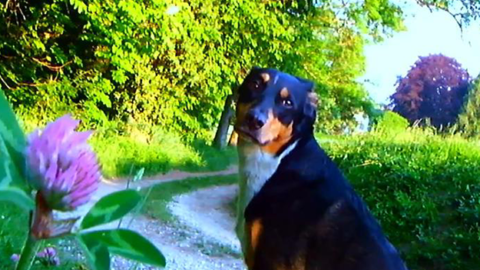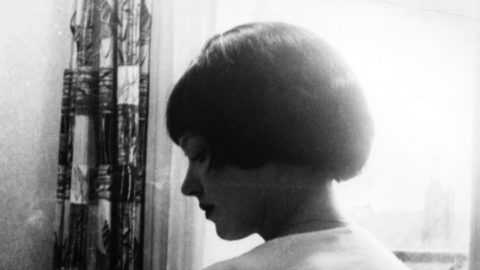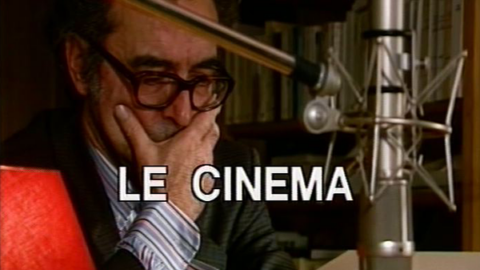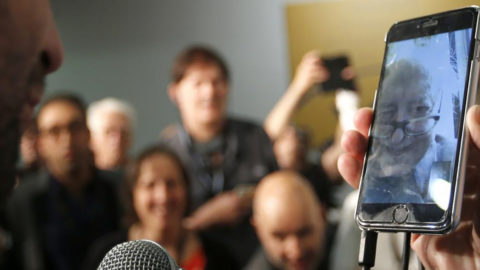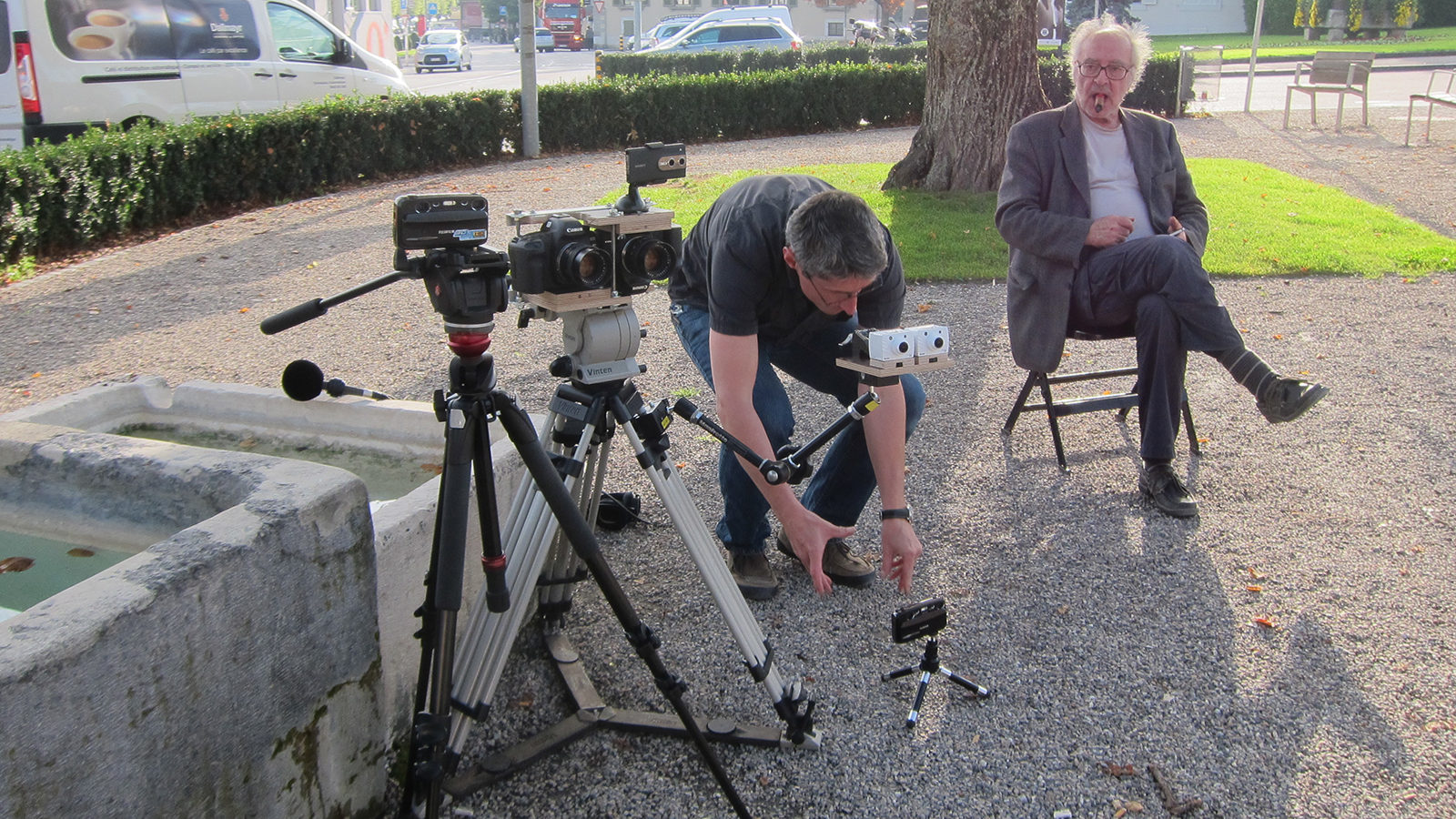
The Hand of Time
From the first, Godard’s movies have been informed by his belief in film as the medium in which the history of the 20th century is written. His collage films, beginning with the epic Histoire(s) du cinéma (1988-1998), describe how the medium in which this history of the world is inscribed shifts from celluloid, which is projected to a collective audience in theaters, to videotape, the Internet, and discs, all available for personal viewing; and how these works also could be used to “write” image histories as personal as literary histories always have been. To these mediums has been added, in the 21st century, digital cinema. Godard’s collage films, then, are about the inscription of the world in moving images and the re-inscription upon re-inscription of that history in keeping with the transformation of the moving image medium itself.
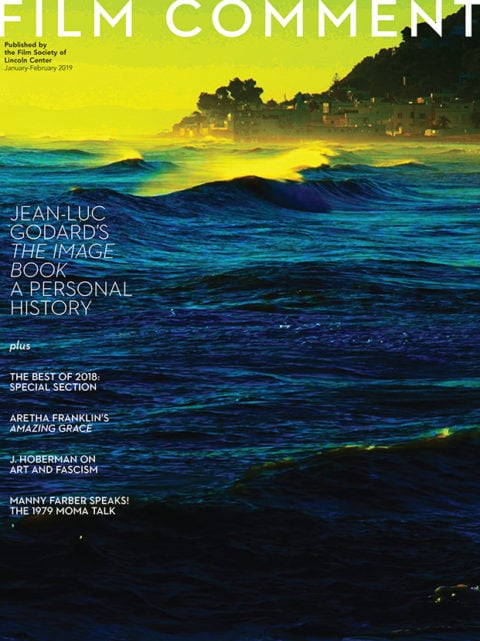
Fabrice Aragno is credited as the cinematographer, co-editor, and co-producer of Jean-Luc Godard’s The Image Book—both the most abstract and the most nakedly personal of the collage films that have spun off from Histoire(s) du Cinema. In making The Image Book, Godard used the same analog recoding equipment that he used for the previous collage films, handing his edit over to Aragno for digital re-inscription, with instructions to preserve the expressive qualities and signs of the analog inscription, while adding elements unique to the digital medium. As Aragno makes clear, Godard’s hands may be too shaky to push the buttons for the digital programs, but the choices Aragno makes have to meet with his approval. And he doesn’t always approve.
Since Godard no longer travels, Aragno introduced the film at the New York Film Festival in the autumn of 2018. He refuses to speak for Godard, but he is more than happy to describe their work process over the past 16 years. He is also tasked with making sure that the film’s elaborate surround sound design is balanced in each venue, although the impact of the speakers varies depending on where you sit. “If you are in the middle with speakers on both sides of you,” he explains, “it is like Jean-Luc is speaking directly into your brain in stereo.” But he also likes being in the back of the theater with the image quite small and the sound coming from all over.
Even better would be a situation in which the audience is free to move about during the film—as they would in an installation. The first of these installations took place in the Théâtre de Vidy in Lausanne during the last two weeks of November. Godard has also been exploring Virtual Reality technology, Aragno explains, but so far they haven’t seen any interesting VR work. He speculates that Godard might use the virtual to define the concrete, just as he used 3-D to define 2-D. “We would undo VR. And then in the end we might show the VR equipment destroyed.”
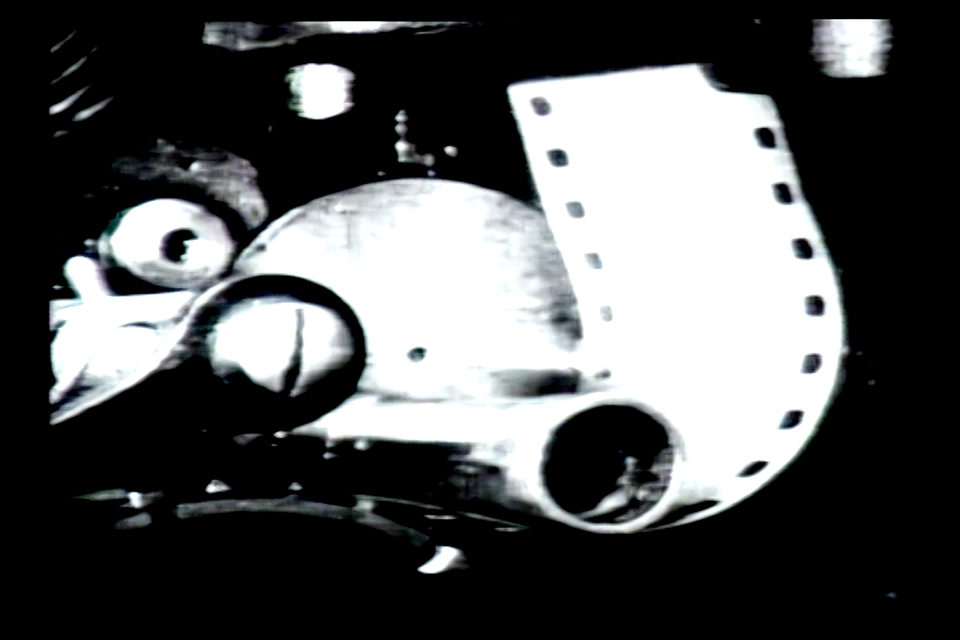
The Image Book. Photo: © Casa Azul Films, courtesy of Kino Lorber
Could you describe how you worked with Godard on The Image Book?
Jean-Luc does the edit on videotape and then I redo everything on computers. I used Final Cut for Goodbye to Language, including the 3-D; then I redid the 3-D on DaVinci. And for this film, I stayed with DaVinci. It’s cheap.
The editing in The Image Book is somewhat different from Godard’s previous collage films, even though some of the images here are ones he’s used before. Rather than images colliding at the edit point, they often seem to stutter into place. I think that’s the effect of there being a fraction of a second of black between many images. Does the black occur because of the primitive analog technology that Godard uses to download the images?
There are different reasons for the black frames between shots, but all of them are intentional. Or something might have been a mistake, but then he decides to keep it. For example, the sequence of three shots from Johnny Guitar.
He’s used that “Tell me you’ve always loved me” sequence between Joan Crawford and Sterling Hayden so often that my immediate reaction was “Oh no, not again.” But it was different here.
He took the image of the woman, then the man, and then the woman, and he kept all the sound, but he replaced the image of the man with just black, which is silence. A Palestinian friend of Jean-Luc wrote to him that the way of learning the Koran is with silence. But more generally, just because the technology is primitive doesn’t mean that he doesn’t get exactly what he wants. It’s like a painter wanting to keep the evidence of the brush stroke. Sometimes it’s a mistake but that’s okay. I think it’s important to have that in the film. But Jean-Paul Battaggia, who also works with Jean-Luc—it’s the three of us—hates these “mistakes.” We’ve worked together 16 years, and it’s more than working. Jean-Luc’s body is getting old, and although he isn’t old in his mind, there is an awareness of time in all of us. Maybe The Image Book is his love letter to cinema. He is reflecting on his whole life.
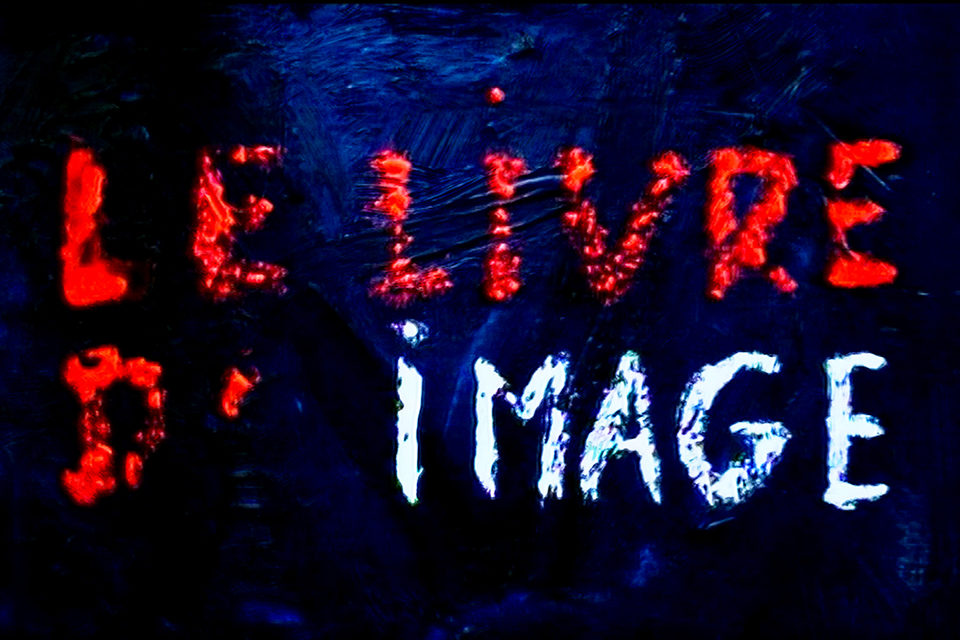
Could you talk a bit more about what you do with the material JLG gives you—the edit he has made with his DVCAM recorder from what he plays on his TV.
You know how in postproduction you are supposed to color-correct the picture so everything is smooth and even? Jean-Luc wants the opposite. He wants the rupture. Color and then black and white, or different intensities of color. Or how in this film, sometimes you see the ratio of the frame change after the image begins. That happens when he records from his TV onto his old DVCAM analog machine, which is so old we can’t even find parts when it needs to be repaired. The TV takes time to recognize and adjust to the format on the DVD or the Blu-ray. Whether it’s 1:33 or 1:85. And one of the TVs he uses is slower than the other. He wants to keep all that. I could correct it, but he doesn’t want me to. See, here’s an image from War and Peace. [Shows sequence on his laptop] He did the overlays of color—red, white, and blue—using an old analog video effects machine. That’s why you have the blur. When I tried to redo it in digital, I couldn’t. The edges were too sharp. And why the image jitters—I don’t know how he did that. Playing with the cable maybe. Handmade. He wants to see that. It’s a gift from his old machine.
He makes a book for me to use for each film: first there is the outline of the whole film in chapters, with some of the text and images for each chapter. This is like the book we published with Anne-Marie [Miéville] for this film. We also did them for Film Socialisme and Goodbye to Language. And then he takes one frame from each image he has edited. He gives it a code number, and he writes what the format is, where the sound begins and ends, where the music begins and ends, everything. But I don’t use that book very much because I just copy his tapes into DaVinci. And sometimes I find better copies of the films he used and substitute them.
But sometimes, when I try to make things better, it’s a mistake. There is a passage from a Dovzhenko film that moves me very much. It’s in the section [of The Image Book] called “The Central Region,” where the voiceover is about time and the absence of time. I found what I thought was a “better” copy of the film, where you see more of his face, and more of her eyes, and his hand on her breast. All that moved me so much. But Jean-Luc said, “You don’t understand me at all. This is what people do when they do restorations. They put Botox in the film.” So yes, it’s important to see the faces but it’s just as important to see the snow in the image—all the deterioration. And also to hear the noise in the sound. Jean-Luc records his voiceover with an old microphone, and we keep all the noise. It’s the mark of time.
This is what we are preparing now. [Shows on laptop again] He sent this to me yesterday. “Vision of the Day.” It’s a diagram of the space in Lausanne where we will show The Image Book. Here are some of his clothes, and here is a small carpet from his home, and on it is a book by Anne-Marie, Images en parole. It’s one of the books we see in the film at the end. See the wooden table. And here are the seven speakers and where the video screen is placed. It is set up like a small theater, but we could set it up in different kinds of places, like an old church. Outside the entrance will be the first two collages Jean-Luc ever made, framed and hanging on opposite walls with a short text about perspective. Inside, behind the video screen, is a white wall with a black door on one side. I don’t know why—maybe it’s the white and black of early cinema, and the black door, it sounds exaggerated to say, but maybe it’s the entrance of death. He doesn’t say. But the sense of being inside and outside of cinema at the same time is important.
And in conjunction with the installation, we are showing in a regular theater in 35mm the four films that led up to The Image Book: In Praise of Love, Notre musique, Film Socialisme, and Goodbye to Language. The installation will travel like a theater piece or the way the Lumière films traveled. The first Lumière film was shown in a café. We would like to do it in the Hermitage, but we need to raise the money. We did this kind of tour for Goodbye to Language. The art cinemas in Switzerland didn’t have 3-D projection, and the big cinemas only showed superhero stuff. So I constructed this system using two projectors to create the 3-D, and we toured with it.
Isn’t there a scene in the film with Godard painting something?
Yes, it’s in the Arabia section. He filmed himself painting. He used the camera on his iPhone. I put it on the computer; I pushed the colors—the black down, the saturation up. There’s a lot of work between what’s on the TV in his studio and what’s in the finished film. This particular image I did with Jean-Luc there. My hands were on the tools, but he told me what to do. It is his gesture.
Closer Look: The Image Book opens on January 25.
Amy Taubin is a contributing editor to Film Comment and Artforum.



